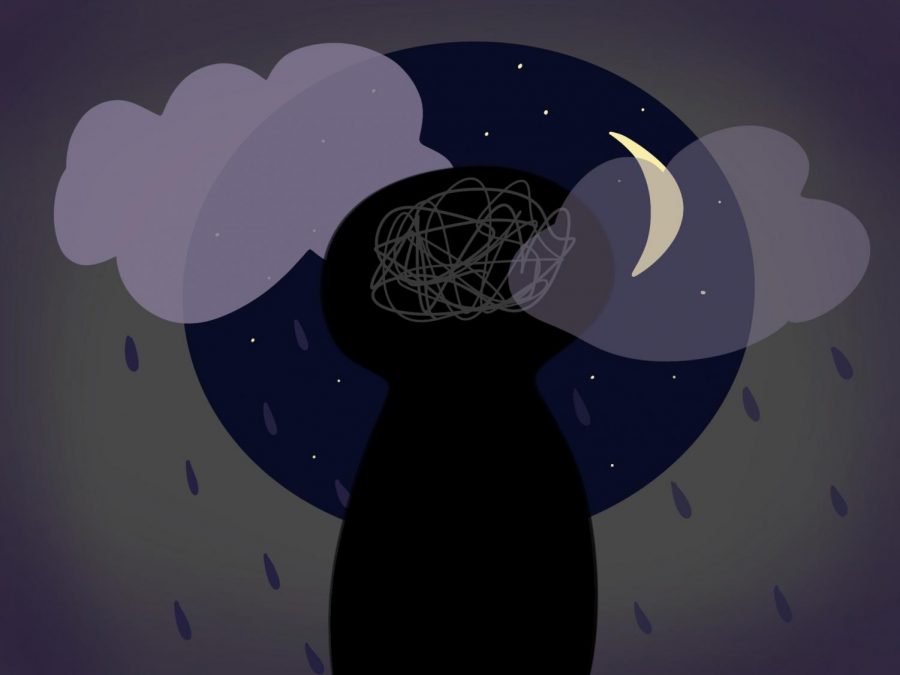Watching the days get shorter: how to cope with seasonal depression
Those affected by SAD are often drained of energy and motivation.
With the holiday season rapidly approaching, festive lights, holiday movies and seasonal treats are appearing all over the place; but the holidays are not the only thing looming around the corner. As the days grow shorter, many people notice massive shifts in integral aspects of their lives: their moods, motivation, energy and social battery. Daylight hours are dwindling, the midnight sky is darker, the air bites harder and seasonal depression is manifesting.
Seasonal depression is the short-hand term for a larger overarching type of depression known as seasonal affective disorder (SAD). This type of depression ebbs and flows with the four seasons and is most present with the arrival of fall and winter.
Typically, those that experience SAD can notice higher levels of fatigue, low moods and mood swings, changes in appetite, feelings of hopelessness and lower motivation.
For some, the effects of SAD can interfere with day-to-day life. However, there are ways to prevent SAD from becoming debilitating. Here are five ways to cope with seasonal depression.
1. Stay active
Working out is one of the ways to get your body to naturally release endorphins. The release of these endorphins can help increase feelings of happiness and euphoria. For some, exercise has been compared to show effects similar to therapy and even anti-depressants.
2. Seek out light
One of the main components playing into seasonal depression is the lack of sunlight throughout the winter. One of the easiest ways to combat this is to seek out both natural and artificial light. In the mornings, draw the curtains open as early as possible to allow natural sunlight into the home.
When the sun isn’t present, one possible solution that has been tested is light therapy: sitting in front of a light containing white fluorescent light tubes with plastic screens to block UV rays. One should discuss with a doctor the possibility of light therapy before trying it.
3. Look at the clock
A major factor in the lack of motivation that many people feel as the fall progresses to winter is the perception that their days are getting shorter, cutting the amount of time available to complete their tasks. A way to mediate this is to keep a clock in view. This will help in reducing that no-time-left mentality that many adopt due to seasonal depression.
With a view of what time it is, anxiety can be reduced as the clock serves as a reminder that there is still time in the day — even if the sun has set.
4. Stay social
As the weather grows colder, many people opt to stay inside rather than go out. For many, this decreases the amount of social interaction they receive, lowering moods and increasing fatigue. Keeping in touch with friends and family in order to maintain the same level of social interaction as is present in the warmer months can help with fighting off loneliness and the desire to self-isolate.
Texting, staying in contact through social media and video calls like FaceTime or Skype are all ways to keep in touch with your social circle.
5. Maintain day-to-day routine
One of the best ways to combat a lack of motivation is to maintain the same day-to-day routine that’s present when there are more daylight hours. This way, regardless of whether or not the sun has set, the same amount of tasks will be completed in the same amount of time. At the end of the day, there will still be time left to do things for enjoyment.
The most important thing to note about SAD is that it is a mental health condition and none of its symptoms equate to laziness or bad work ethic. If SAD becomes overwhelming and interferes heavily in day-to-day life, DGS offers support through school counselors for students and social workers and psychologists that are available to both students and staff.


